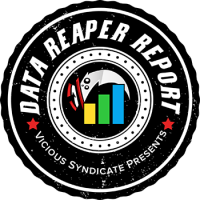
Welcome to the 115th edition of the Data Reaper Report! It’s the first report following the balance changes.
Our Data Reaper Project, including the Data Reaper Live has 5,100 active contributors and we thank them wholeheartedly. Contributing to the Data Reaper project through either Track-o-Bot or Hearthstone Deck Tracker (recommended) allows us to perform our analyses and to issue the weekly reports. Without the community’s contribution, there would be no project. Contributing data is very easy and takes a few simple steps, after which no other action is required. If you enjoy our content, and would like to make sure it remains consistent and free – Sign Up!
Quick Links
Class/Archetype Distribution | Class Frequency | Matchup Winrates | vS Power Rankings | vS Meta Score | Class Analysis & Decklists | Meta Breaker of the Week | How to Contribute | Credits
Number of Games
| Overall | 65,000 |
| Legend | 12,000 |
| Ranks 1-4 | 22,000 |
| Ranks 5-9 | 21,000 |
| Ranks 10-14 | 8,000 |
Class/Archetype Distribution
[TABS_PRO id=16500]
Class Frequency
[TABS_PRO id=16501]
Class Frequency Discussion
While this is the second Data Reaper Report published for Rastakhan’s Rumble, we must treat it as if it’s the first report of an expansion. The balance changes have completely changed the meta and sent every archetype into a spiral. New decks are being tested, many cards are being tested in established archetypes, and different archetypes are in very various stages of refinement. This is important to consider when assessing archetypes’ performance levels later.
The early days of the post-patch meta are infested with Hunters at a pretty extraordinary level. We expected this, since Hunter was a very powerful class before the patch and was completely unaffected by it. As we’ve said in our balance changes breakdown last week, Hunter was likely to be an extremely safe and reliable method to climb ladder in the early days. This is exhibited by its prevalence at the 1-4 bracket where it approaches 35% of the field. At legend, the numbers drop to around 25%, which might indicate that while Hunter is certainly strong, and there’s probably a good reason why it’s the most popular class at every rank, its power level might not be at unmanageable levels.
Hunter currently displays 4 common archetypes: Spell, Secret, Cube and Midrange. Outside of legend rank, Spell Hunter is the most popular deck in the game by a large margin. However, Spell Hunter’s numbers get cut in half at legend compared to the 1-4 bracket. Secret Hunter’s prevalence behaves similarly to Spell Hunter, while Cube Hunter maintains more consistent numbers across the board. All three of these archetypes are very similar, or identical, to their pre-patch versions. The wildcard is Midrange Hunter, which is currently growing in popularity and is more common at higher levels of play. It has a diverse set of builds and is at its early stages of refinement. The two main approaches to Midrange Hunter are the classic Houndmaster version, and the Master’s Call version.
Things have really opened up for Priest after the balance changes. The class launches itself to the 2nd spot in popularity from rank 4 onwards. It also boasts a diverse set of archetypes: Resurrect Priest, Control Priest, APM Priest and the erratic Combo Priest are the most common archetypes for the class, but Mecha’thun and vanilla Quest builds are also around (APM runs the quest but it’s not a “quest” deck, so it’s entirely separated).
Kingsbane Rogue has severely shrunk in its size and is attempting to reinvent itself through more aggressive builds. The most popular Rogue archetype is now Odd Rogue, a deck we anticipated to greatly benefit from the fall of Druids and Odd Paladin. Tempo Rogue is the second most common archetype, and it’s the most experimental archetype in the game, filled with so many different builds as well as an incredible amount of unmitigated garbage.
Warlock is another diverse class that has seen the composition of its 4 archetypes significantly change as a result of the balance changes. The main takeaway is that Zoo Warlock’s numbers have declined while Cube Warlock is seeing more play.
Paladin has seen a big change from the patch. Odd Paladin has predictably fallen in prevalence after the significant loss of Level Up, and Even Paladin is now the more popular deck between the two. However, Exodia Paladin is the current frontrunner of the class after a massive spike in popularity. Taking advantage of the fall of several late-game strategies such as Shudderwock Shaman and Kingsbane Rogue, Exodia Paladin is now one of the most popular decks in the game at all levels of play, but especially at legend.
Warrior has been revitalized after the patch, and players are more receptive to experimenting with the class. Baku is still the dominant build-around card for Warrior, but it’s been split between two different approaches. There’s the normal Odd Warrior build which has embraced a dragon package, and then there’s the taunt version of Odd Warrior which runs the quest and usually a big beast package with Oondasta. Odd-Taunt Warrior has been gaining more traction recently and is creeping up ahead of Odd Warrior in popularity. Rush Warrior is also present, and is still highly experimental, with players trying to figure out how to best utilize a proactive deck for the class. We’ve got you covered.
The Mage class is quite popular at lower skill levels, but steadily declines as you climb ladder. It appears to be still searching for its identity, with attempts to establish meta decks from several archetypes. Big-Spell Mage is the most popular deck from rank 4 onwards, followed by the two iterations of Odd Mage: the normal control version we label as “Odd Mage”, and the aggressive version we’ve split off to call “Aggro-Odd Mage”.
We should highlight that most classes in the game currently display a multitude of strategies that are drastically different in their game plans and in their card choices (which you couldn’t say about Druid, for example). This is encouraging to see since it makes it less likely that staleness will take over. The 25% Hunters at legend don’t feel as repetitive when they’re evenly split between vastly different experiences.
The one exception is Shaman, which is hopelessly stuck into playing one deck: Even Shaman. Shudderwock Shaman as a combo deck is gone and the class hasn’t seen any post-patch innovations that we can be excited about. It looks to maintain its staleness until April.
Finally, let’s say a few words about Druid. The class has completely collapsed straight to the bottom of play rates. Faithful Druid followers attempt to make what’s left of the class work, but it looks to be a tall task. There isn’t a single, fleshed out Druid archetype that’s displaying a meaningful presence at the moment, which is why you won’t find any Druid decks in the matchup table or in the power rankings. We’ll talk about our impression of them from the smaller sample we have, of course.
[TABS_PRO id=16502]

[TABS_PRO id=16503]
vS Meta Score
[TABS_PRO id=16504]
vS Power Rankings Discussion
We consider this report’s data to be more thought-provoking than the actual first report of the expansion. Based on our analysis of the data, we think that there’s a far better chance of new decks establishing themselves in the Rastakhan meta. Also, there’s a pretty big discrepancy in power perception (very overrated and very underrated decks), which means that a massive shift is about to occur, leading to a significant change to the current landscape. Unfortunately, the revitalization of the Rastakhan meta came at a cost of deleting one class from the game, which we will get to later.
We start with Hunter, a class many consider to be the best in the game. Is it the best class? It’s hard to argue against that notion at first glance, but the devil is in the details. Spell Hunter is perceived by many players to be the best deck in the game, as evident by its extremely high play rate. However, based on these numbers, we consider it to be the worst Hunter deck out of the 4 common archetypes listed, and therefore overwhelmingly overrated. Secret Hunter’s proactive approach makes it stronger than Spell Hunter against most Priest decks, faster Paladin decks and gives it an important advantage in the mirror matchup.
Cube Hunter is probably the best deck in the game today, with an incredible matchup spread. It has very few weaknesses, and even its best counters hardly dominate the matchup.
Midrange Hunter’s win rate might be inferior to Spell Hunter, but this is likely temporary. The latest Master’s Call build that is slowly taking over the archetype is very promising; so promising that we wouldn’t be surprised to see the archetype eventually landing in Tier 1. Its ceiling looks significantly higher than the already refined and stable Spell Hunter.
This leads us to expect a big crash in Spell Hunter’s popularity. A decline in Spell Hunter will heavily affect the power levels of every deck in the game and give the meta a shakeup. While Hunter is likely to stay powerful, we expect its numbers to relax.
Cube Hunter might be the best deck today, but the best deck tomorrow could very well be its strongest counter, Odd Rogue. We already see their power levels closing in at legend, in a meta that’s ahead of the field in terms of power level awareness. Spell Hunter is one of Odd Rogue’s worst matchups, and despite its popularity, the aggressive Rogue deck still boasts a very strong win rate at all levels of play. A decline in Spell Hunter should make Odd Rogue even stronger, and it’ll be up to the meta to find new solutions to stop it. The balance changes have only made Valeera angry. She dropped her Kingsbane and is stabbing you with her hero power now, and there’s no Malfurion or a swarming board of silver hand recruits to stop her.
Should Odd Rogue spin out of control, a brutal solution is available. Garrosh is back, he’s tanking up and he’s certainly ranking up. Odd Warrior looks significantly stronger than before, but it’s Odd-Taunt Warrior that currently finds itself in Tier 1. The most significant advantage in Odd-Taunt Warrior is the Spell Hunter matchup, but there are enough differences in the matchup spread of the two Baku decks to make us believe neither should deem the other redundant anytime soon. Both have their pros and cons, and taking these into considerations, we expect Odd Warrior to close the win rate gap on Odd-Taunt Warrior and perhaps even surpass it after a Spell Hunter collapse.
Paladin may have been hit with a big nerf, but it’s still thriving. As a matter of fact, Odd Paladin is still a very good deck and its win rate is currently rising as players are figuring out how to fill the gap caused by the nerf to Level Up. Odd Paladin’s problem is that even if it makes it back to Tier 1, Even Paladin is just significantly stronger, and the two decks have struggled to share space in the past.
But the bigger news for the class is that Paladin now has a legitimately strong late game strategy. Exodia Paladin looks much better in the new meta. The archetype’s win rate is slightly propped up by its terrific matchups against non-Cube Hunters, so it drops off Tier 1 at higher levels of play, and there is a danger its stock will fall in the future. However, if Odd Rogue rises and forces more Warriors into the meta, Exodia Paladin should still have a very strong place.
Priest is also back in a pretty big way with both Resurrect and Control Priest establishing themselves as Tier 2 competitors. While Resurrect Priest looks stronger on paper, we have reasons to believe that Control Priest’s ceiling is significantly higher than the numbers suggest due to sub-optimal card usage plaguing the archetype.
The Divine Spirit Priests are less impressive. Combo Priest is a complete mess, littered with builds we cannot embrace. APM Priest’s win rate has crashed back into meme territory, after showing signs of life early in the expansion. Dealing with Hunter secrets is a nightmare for the deck, and even on its best day and at the hands of the best player, we don’t think it’s particularly powerful.
Warlock finds itself in a bit of trouble. Both Zoo and Even Warlock display significantly lower power levels. Zoo Warlock has sunk into Tier 3, with a new matchup spread littered with red and no Druids. Even Warlock is a victim of the Hunter infestation, performing poorly in all matchups against the class, and considering that Odd Rogue and Warrior are likely going to become big players in the future, things look quite bleak for Gul’dan. The only Warlock deck that’s currently thriving is Cube Warlock. As the hardest counter to Spell Hunter in the game, it’s having a blast farming them away at ranks 1-4.
“Mage” and “mediocre” in 2018, name a more iconic duo. Big-Spell Mage is a decent, yet not outstanding deck that’s strong against minion-based strategies and miserable against decks carrying inevitability as well as value beyond the Mage’s ability to remove. Much like before, it’s a deck that tends to shine at lower levels of play and hit a wall at legend. Odd Mage is also developing into a deck with similar limitations. Players will find some decent success with it at lower ranks but the deck will have a miserable time in a more ruthless meta.
The opposite is happening with Aggro-Odd Mage, which has branched out and looks to perform better at higher levels. We consider it to be the biggest hope for the class, and the deck that’s most likely to become consistently successful. The reason why the deck performs better at higher levels of play is that players at legend are more likely to figure out that Nightblade and Clockwork Automaton are terrible cards. The perils of blind net-decking are clearly observed here.
Thrall is sad. Sure, Even Shaman is still good and will likely get better (its win rate has been knocked down because of Spell Hunter) but if we showed you how “good” other experiments with the class are, you’d realize how limited the class is. Don’t expect any miracles from Shaman.
We want to highlight two Tier 3 decks that have potential to improve: Tempo Rogue and Rush Warrior. Both suffer from a poor Spell Hunter matchup (a ‘good’ weakness for their prospects) and both are relatively unrefined.
Tempo Rogue is all over the place. We discuss it in the Rogue section, but the archetype is littered with sub-optimal card choices that severely hurt the archetype’s win rate. Furthermore, if you don’t run Hooktusk in Tempo Rogue, you’re just doing it wrong. Builds that properly utilize Hooktusk look like real meta contenders and are far better than what current numbers suggest.
Rush Warrior’s problem might be that it has too many niche legendary cards that don’t see play in other decks, making it harder for players to “take the plunge” and try it out. We think it’s also behind other decks in its optimization, but it’s getting there.
From the low sample data we have gathered, there’s a good reason people are not playing Druid. The class looks dead in the water. Not a single Druid deck is even close to Tier 3, with Spiteful displaying a win rate around the mid 40’s. The nerf to Wild Growth and Nourish demolished Malfurion’s game plans. Things look so bad for the Druid that he might be sent to that retirement home Garrosh and Thrall spent their K&C days in. While there’s a chance that once players let go of current shells and attempt to build new ones, a playable Druid deck will emerge, we wouldn’t hold our breath. For the first time in Hearthstone’s history, Druid is the worst class in the game, and soon we might find out whether its power level is comparable to some of the worst classes we’ve ever seen (such as Hunter in Mean Streets and Warlock in Un’Goro).
Class Analysis & Decklists
Druid | Hunter | Mage | Paladin | Priest | Rogue | Shaman | Warlock | Warrior
After staying untouched in the balance changes and having its biggest counter in Odd Paladin nearly disappear, Hunter has exploded in popularity this week, becoming the most popular class at every level of play by a wide margin.
Spell Hunter was the deck players flocked to as the patch went live, since it benefited from both the disappearance of Druid as well as Odd Paladin. With both Odd Paladin and Zoo Warlock seeing significantly less play, and Odd Rogue becoming more prominent, we recommend running two Freezing Traps instead of two Explosive Traps.
Secret Hunter isn’t as popular as its Spellstone counterpart, but its aggressive nature gives it an advantage in the current meta, and it is favored in the mirror against Spell Hunter. Cantelope’s pre-patch build should still work well today.
Cube Hunter is a major winner of the balance changes, seeing its hardest counter (Odd Paladin) significantly shrink in size. Druid’s death makes tech cards such as Ooze and Mossy Horror poor choices after the patch. As flex slots free up, we’ve seen Stitched Tracker’s performance rise. With aggressive decks less prevalent, it turns out that the 29th and 30th best cards in Cube Hunter would be third copies of minions from the first 28 cards. We highly recommend running two Trackers. It increases the consistency of the deck and synergizes well with Oondasta, the significant addition to the Big Beast package. We also assess that Amani War Bear is a more consistent 5th beast than Charged Devilsaur. The taunt is invaluable and it’s far stronger when played from hand. We believe that the featured build is currently the best 30 cards you can put together in a Hearthstone deck. It was taken to top 10 legend by BigBoy.
Midrange Hunter is the new hotness with Master’s Call token builds focused on fueling Scavenging Hyena with Springpaw and Unleash the Hounds. This direction looks to potentially launch the archetype to Tier 1 at its current trajectory. As days went by, these builds became more combo-centric, attempting to abuse the snowballing nature of the deck to its full extent. After evaluating card choices in the deck, we’ve found that Dire Frenzy is a pretty weak card that’s not justified through its interaction with Master’s Call, and can be considered a narrow tech for the Warrior matchup. Tundra Rhino, on the other hand, is very powerful. We also find Savanah Highmane to be relatively underwhelming in a deck that runs pretty good card draw engines and isn’t as desperate to “curve out” as it has traditionally been. Interestingly, Halazzi is absent in most current lists. Considering how powerful Springpaw is in the deck, we suspect that Halazzi is worth more than a mere consideration. If you’re wary of crafting it, one Highmane is included in the featured build until we can thoroughly test the loa’s performance.
Priest is one of the biggest winners of the balance changes. Druid’s large presence in the meta limited Priest’s potential as a powerful late game combo class. Now, with Malfurion gone, Anduin has a much better chance to thrive. The higher you climb the ranks, the more Priests you see as players at higher levels of play are more aware of the Priest renaissance.
Resurrect Priest has seen its stock rise following the death of several late-game strategies (Shudderwock Shaman, Kingsbane Rogue and Malygos Druid) that competed in its niche. We think the optimal build for the archetype has not changed, with Mass Hysteria proving to be a very good fit for an archetype that’s passive in the early game.
APM Priest has also enjoyed some individual success, though the archetype’s win rate has crashed back into a very poor state. We recognize (and can measure) that this deck is very, very difficult to play even for the best players in the game. Our message is that unless you’re a high-level player who’s very experienced with the deck, you’re unlikely to find good results with it. Even if you are such a player, it’s unlikely that you will do better with it than a long list of decks that are far stronger.
Control Priest has benefited from the disappearance of the strongest armor class in the game. Druid was just a terrible matchup that kept Control Priest out of the sight and minds of many players. Now, the deck is performing quite well, but we think its potential has yet to be reached since its card usage is far from optimal compared to other archetypes. We’ll mention a few key insights we’ve gathered from our extensive research of the deck.
Before the balance changes, and when Odd Paladin was a dominant and prevalent archetype, Wild Pyromancer’s power level in Control Priest was still lukewarm. Now, it is a pretty blatant trap card that doesn’t belong in the deck whatsoever. Similarly, Divine Hymn is inferior to Holy Fire as a source of healing in the deck. Holy Fire lines up better with the deck’s burn plan and offers non-conditional removal compared to the low impact of Divine Hymn, a card that also gets worse without Pyromancers.
But the biggest oversight committed by most popular builds is the inclusion of Primordial Drakes and exclusion of Crowd Roasters. Primordial Drake’s AOE effect lines up very poorly against the current meta, which is mostly resilient to 2 damage. Meanwhile, the underplayed Crowd Roaster is one of the deck’s best performing (!) cards, offering that precious non-conditional single target removal that also becomes an awkward threat for your opponent since we’re playing a deck that runs Alexstrasza.
Finally, Cabal Shadow Priest is a surefire 2-of and often game-winning with Twilight Acolyte (in all slower matchups but with a special mention to Deathstalker Rexxar). Acolyte of Pain is a solid turn 3 play offering card draw to find your win condition. Tar Creeper is an alternative 3-drop we would consider in an aggressive meta. Mass Hysteria can flex into the deck instead of the 2nd Holy Fire, but the deck is quite proactive so while the card can be useful, it isn’t as powerful as it is in Resurrect Priest. The featured build was taken to top 100 legend by Corbett.
With the nerf to Kingsbane Rogue, Odd Paladin, and Druid of all kinds, Odd Rogue has predictably risen to become the most popular Rogue archetype. What’s impressive about Odd Rogue is its success in the current meta despite the overbearing number of Hunters. Odd Rogue does well against Cube Hunter but has a very tough time facing both Secret and Spell Hunter. Hunter secrets have always been very difficult to deal with for the Rogue class, and the current meta is no exception. The Odd Rogue build is straightforward and while Tar Creeper can slightly help against Hunters, it’s a very bad card in most other matchups.
Tempo Rogue has looked very weak in the early days of the patch but we wouldn’t count this archetype out. Its optimization has been extremely slow. The love affair with Mojomaster Zihi and Spirit of the Shark needs to end, frankly. Our message is: “go Hooktusk or go home.” She is busted! This card’s power level is comparable to Kathrena Winterwisp and Master Oakheart, and this is not an exaggeration.
We’re also high on the Corpsetaker package, so we’ve further iterated on the idea from last week of fitting both packages into one deck. Fungalmancers are weaker without Saronite Chain Gangs, so we’ve cut them for stronger standalone threats in Graal and the Lich King. Graal is a question mark, but with a significant amount of big bodies in the build, the average outcome of the card becomes quite favorable and could be worth it.
While the old Kingsbane Rogue looks dead in the water, the archetype now looks to find an aggressive build path. Both J_Alexander and Uberer hit top legend ranks with an Aggro Kingsbane Rogue deck. This iteration is smart but might have some room for further tweaks. Our suggestion is to cut Backstab, Slayer and SI:7 Agents for Preparations and Saps. Sap is very important in Kingsbane decks, while Preparation is too good to ignore with Raiding Party and Unstable Element.
J_Alexander hasn’t stopped with Rogue innovation. A new hybrid Tempo/Miracle list was piloted by the same pair to high legend ranks. This list looks to abuse Raiding Party without investing the resources needed to support Kingsbane, instead running a “Miracle” package with Fal’dorei Striders alongside Shadowblade. We think this is a refreshing evolution of classic Miracle builds.
Finally, Quest Rogue has also made an appearance, with a few individuals (Ryvius is one) hitting top legend ranks piloting the deck. But so far, the archetype hasn’t been impressive and doesn’t look to be making yet another comeback.
- Rogue Class Radar
- Odd Rogue
- Tempo Rogue
- Kingsbane Rogue
- Quest Rogue
- Miracle Rogue
- J_Alexander’s Hybrid Tempo/Miracle Rogue
Warlock was a difficult class to assess when it comes to the balance changes. As the dust settles, it appears that Gul’dan finds himself in a tougher spot. Most Warlock archetypes have lost ground and saw their matchup spreads worsen.
Even Warlock is having a hard time dealing with the overbearing number of Hunters, the rise in Odd Rogue, and the emergence of Priest and Warrior. These matchups are relatively difficult for the deck. Even Warlock was more comfortable facing Druids and their weaker removal kit, which could also be partially deleted by Geist. Though it has been struggling, we think Even Warlock is also suffering from tech inertia. Players are keeping cards they should be cutting from the deck, such as Skulking Geist and Mossy Horror. Mojomaster Zihi is another card that often finds its way into decks and produces weak results. What Even Warlock needs is more pressure cards, which is why two Bonemares is not a dirty concept in the current meta. Remember that Even Warlock is an aggressive deck in disguise, and if it’s struggling against removal focused decks, it needs to hit face harder.
Like Even Warlock, Zoo Warlock is doing poorly against the same rising matchups, sinking the deck’s matchup spread into the bright red territory. Zoo also preferred facing Druids rather than removal-focused decks that take the wind out of its sails. Unlike Even Warlock, it doesn’t have a significant amount of room to improve. Running Doomguards over Dreadlords is the main post-patch adjustment after Odd Paladin’s near-disappearance.
As both Even and Zoo Warlock are struggling, Cube Warlock has clearly become the best deck available for the class. It performs well against Spell Hunter, Odd Warrior and Exodia Paladin. Its win condition has become significantly stronger with other late-game options being nuked from orbit. The main flex spot is the second Faceless Manipulator, which can be replaced by Ooze, Shroom Brewer or Corpsetaker.
Control Warlock’s weakness has always been combo decks, and there was hope that the destruction of several combo decks would help it take off. Unfortunately for the archetype, aggressive decks are not that dominant while several painful matchups are still very prevalent, keeping Control Warlock on the outskirts of the meta.
Paladin is looking very strong in the aftermath of the balance changes. Paladin archetypes generally do well against Hunter archetypes (with a couple of exceptions), and seeing as Hunter is ridiculously popular, that should make any Paladin deck a good choice for ladder.
Odd Paladin received a heavy nerf with the loss of Level Up, but it turns out that the deck was so good that even after the loss of one of its best cards, it is still performing well enough to be very competitive. The hole left by Level Up! is very difficult to plug, and the most promising choice has been Sonagi’s Frostwolf Warlords. Warlords offer a different payoff than Level Up! by consolidating board advantage into a big threat rather than a wide board. It is clearly inferior in that regard but strong enough to keep opponents honest about clearing your board. Don’t sleep on Odd Paladin; even with the play rate dropping, the deck is still quite good.
Odd Paladin may have trouble gaining traction since Even Paladin is now significantly stronger. We tipped this archetype to become the new hit, and in the post-patch meta, it has good matchups against most of the popular decks in the game. We don’t see a reason to deviate from the standard build, though Saronite Chain Gang’s stock has slightly dropped post-patch.
Exodia Paladin has taken advantage of the disappearance of several late-game strategies to become the most popular Paladin deck and a significantly stronger deck than in the pre-patch meta. Most builds agree on the importance of a Lynessa Sunsorrow package.
The package consists of Lynessa, Spikeridged Steed and Potion of Heroism, with a copy of Blessing of Kings as an option to further the more aggressive path of the deck. Lynessa can be an immovable object that wins you the game on the spot against aggressive and midrange decks while pressuring slower decks quite substantially. Remember that the horsemen combo is one of two available win conditions for the deck. The second win condition is punching your opponent in the face. It works, so don’t be afraid to do it.
Mage has been given a second chance, but so far, it hasn’t really taken it. At lower ranks, Mage is surprisingly the second most popular class, but at higher levels of play, we see Mage playing a more niche role in the meta.
Big-Spell Mage initially benefited from the disappearance of combo decks such as Shudderwock Shaman and Togwaggle Druid, but it still has too many poor matchups to become consistently strong. Cube Hunter is an atrocious matchup while Exodia Paladin is also headache-inducing. The deck is still quite effective against board-centric strategies, so it still has a similar role to the one it had before the patch and during Boomsday.
We’re still not impressed with Odd Mage and feel that the only way the archetype can be viable is if it takes on an aggressive direction. The only problem is that most players are still utilizing some atrocious cards in Aggro-Odd Mage such as Nightblade, Clockwork Automaton and Bittertide Hydra. These builds limit us seeing the deck’s full potential. We’ve been iterating on a build that attempts to strike a balance between secret synergy and elemental synergy, and we have an inkling that it’s probably better than playing Nightblade. No elaborate data analysis on this one, it’s just a hunch!
Aluneth Mage has seen some sporadic success, but it’s clear that its days of glory are long gone. An aggressive deck without a turn 1 play is always going to struggle asserting itself. Rest in peace, Mana Wyrm.
With the death of Shudderwock Shaman, Kingsbane Rogue and the Druid class, it was clear that the balance changes were going to be good news for Warrior. The degree of good news to Garrosh depended on the emergence of new Warrior counters to replace those killers.
The only significant counter that emerged is Exodia Paladin, working alongside the already-established Cube Hunter. These are pretty bad matchups for Warrior, but the nightmare scenarios of Quest Rogue and APM Priest have not transpired. With just a few bad matchups and only one truly hard counter, Warrior finds itself in much better shape and is arguably one of the strongest classes in the game.
Baku is still king when it comes to Warrior decks. Most of them are focused on abusing tank up to cripple aggressive decks as well as decks that rely on launching a finite amount of damage. Odd Warrior is currently split between two archetypes: the Standard Odd Warrior with Dr. Boom and the Odd-Taunt Warrior with Fire Plume’s Heart.
The standard Odd Warrior mostly utilizes dragons, much like before the patch, and this approach has proven to be more effective than the older shell from Boomsday. Smolderthorn Lancer, Emberscale Drake and Crowd Roaster are particularly strong in the deck, perfectly complementing the deck’s game plan of removal and survival.
The early signs point to Odd-Taunt Warrior being currently stronger than Odd Warrior because it performs better against some of the most common decks in the meta, namely Exodia Paladin and Spell Hunter. The quest allows Odd Warrior to put a clock on the opponent, which alleviates the most exploited weakness of Warrior’s late game: passivity. Odd-Taunt Warrior also carries a significant advantage in the mirror. Where it’s weaker is matchups against Cube (Warlock/Hunter) decks, which have sticky boards that make your win condition ineffective, and aggressive decks since our removal kit and mulligan consistency is inferior. Zalae’s build runs a big beast package with Oondasta, which is a great fit for the deck.
But while most of the attention is on Baku, we will provide you with the weekly reminder regarding Rush Warrior. The post-patch data indicates that this deck is legit, and so is Corpsetaker’s performance in the deck. We’re just going to shove Corpsetaker in everything until we find a case where it doesn’t work!
With Shudderwock being given a swift boot from the meta, Shaman players are stuck between two choices: either play Even Shaman, a powerful deck that little care to play no matter how good we say it is nearly every week, or play Tier 4 garbage. We know that Tier 4 garbage has its perks, but are we really that repulsed by Even Shaman?
Even Shaman is good because there isn’t a single deck out there that dominates it. It has a solid matchup spread without any extreme weaknesses. With Odd Paladin mostly disappearing from the meta (at least for now), Even Shaman is a strong alternative to a consistent early game deck. It also feels much better to play without Spreading Plague around. We’ve seen some new builds running Scarab Egg as a sticky early game body to synergize with buffs. Our conclusion is that Scarab Egg is a pretty terrible card in the deck. We should only play good cards, like Corpsetaker, in good Hearthstone decks. Corpsetaker is a good card for sure. Winter is here, after all.
We have not seen such a dramatic disintegration of an entire class since the Fiery War Axe nerf, and you could argue that the death of the Druid class is far more dramatic. After all, Fiery War Axe was a very powerful card in every Warrior deck. Wild Growth was the foundation of every successful Druid deck’s game plan that we’ve seen since Witchwood, and the foundation of most Druid decks in Hearthstone’s history.
Not even Spreading Plague and Ultimate Infestation can keep Malfurion in this meta as it stands without the early game ramp that the class had become dependent upon and been balanced around. With Innervate, Wild Growth, and Nourish all nuked into weaker forms, the core Druid toolkit is no longer capable of propping up any number of the multitude of late-game strategies that once felt so dominant. The Druid class will likely need a long time to recover from this.
We do not have any Druid decks which we can truly recommend playing on ladder. Success with the class has been a rare sight, and these cases are dwindling further as the meta becomes more refined. There isn’t a single Druid archetype that’s displaying a win rate which would take it out of Tier 4, and the class might justify a tier of its own.
There is only one remotely playable Druid deck which may have a chance of becoming relevant. Spiteful Druid’s win rate is not completely terrible, and with further improvement, it might make it to Tier 3. After careful analysis of the deck, we’ve found that most Spiteful Druid builds do NOT run Corpsetaker. We repeat, they do NOT run Corpsetaker, Malfurion.
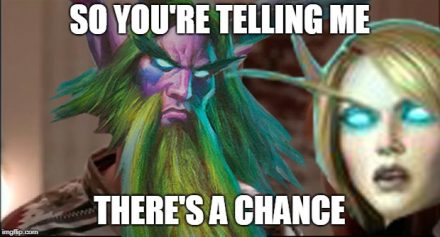

The clock is ticking. The alarm bells are ringing. Early indications are that Odd Rogue is about to blow up. While a poor matchup against Spell Hunter could cause you to raise an eyebrow about this claim, the former’s bubble is about to burst, and as players flock to the best deck in the game (Cube Hunter), Odd Rogue is perfectly positioned to be its strongest counter and usurp it.
We can also see a few steps ahead, with Odd Warrior decks looking to rise in popularity following a Rogue blow up, which should spark the formation of a cyclical and potentially diverse meta. There are many unknowns, and there are many decks we feel are not performing to their potential in the early days of refinement, but there’s one thing we probably know: Druid won’t be around.
Our Data Reaper Project, including the Data Reaper Live has 5,100 active contributors. Without them, this project would not be possible, so we’d like to thank all of our contributors for their help.
Preparing our weekly article requires a significant amount of time and effort from many individuals. We would like to wholeheartedly thank our current Patreons, whose generous donations help us fund computing and server costs.
vS Gold is a new membership plan aimed to support our efforts towards improving our content and data analysis while receiving some bonuses and extra features.
Tier 3+ Patrons
Special thanks to Leo G, Aaron B, Jed M, Drew M, Alan J, Eric L, Zolstar, Lim E, Sean H, Steve F, Andrew N, NObdy, Mark S, Alonso P, msKang, Andrew R, Andrew H, James Y, PinkMageDiaries, Je-ho, seungwon, and Adam P for supporting us for the month of December.
Thank you to our Tier 4 patreon: Walter J!
A HUGE thank you to our Tier 5 patreon: Curt S!
Contributors
Here are all the people that participated in bringing you this edition of the vS Data Reaper Report:

















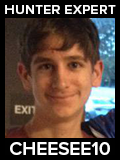

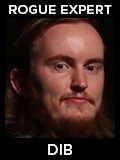








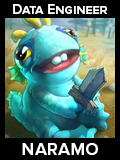

Dear Lord, just look at that! They broke the meta! It feels like 2016-2017 all over again with very low deck variety. Are you guys interested in making an article comparing to Shaman Stone, Jade-Pirate times?, It totally feels like it, how about this meta polarity?
Could you possibly rename “Even [Classname]” to “Even-[Classname]”? I always have to go back and re-read sentences that start with these two words, such as “Even Warlock is a victim of the Hunter infestation”, once I realize I mentally used the wrong form of “even”. “Even-Warlock is a victim…” would be clearer!
Poor Saturos (Druid expert) time for a career change (?)
VS i love your reports i check for updates as much as i check for new manga chapters and im never dissapointed. Happy new year and best wishes.
Wouldn’t Token Druid work though? Afaik it’s not that reliant on ramp.
Also the reason why Even Shaman isn’t played more is because the deck is stuck in a time loop. Menacing Nimbus aside, it hasn’t changed since Witchwood.
nerf cube warlock they said. its 2 strong they said. retarded decks like agropally and zoo cant go through it.
cubelock at the peak of its success had 10% playrate and they nerf it…
meanwhile 30% of ladder are retarded hunters who just can faceroll
lol, there is soooooo many many hunter.
nerf hunter.
I feel like boring see hunter.
I’ve been experimenting with a Corpsetaker Tempo Rogue list since Rastakhan’s beginning. What I can say is: Hooktusk really IS good, and normally opponents concede when I play her. The swing she provides is amazing. I’ve reached rank 1, but not legend (mostly due to not playing as much as I’d like to), but her climbing the ladder is pretty doable.
The case I’d like to make is that Fungalmancers often provide extra damage on a Hooktusk turn follow-up which is crucial to lethal; during a Emerald Spellstoneturn to provide good trades; they serve as excellent late game Cold Blood activation turns as well. Lich King is all right and so is Gral, but I firmly believe Fungalmancers are the superior choice.
I wonder why odd mage would have to run a second copy of blast wave and Baron Geddon. Both are bad as ways to get AOE damage. The deck already run some elementals, why not change these cards for blazecallers?